Today, people are starting to pay more attention to, not just what they are eating, but from where the food originates. If derived from animals, people want to know if the animals are raised humanely. The increased desire for organic pork meats originating from animals raised in non-abusive, animal-friendly environments has some people looking to learn how to raise pigs. When raising pigs for meat, if you are successful, it can prove quite lucrative.
[the_ad_placement id=”in-text-1-type-r”]There is value in the pig’s meat as nearly every part of a slaughtered pig is a consumable food source. Ham, gammon, bacon and sausage are some of the most common meats. A meat jelly or head cheese is made from the animal’s head, pork scratchings is made from pig skin, and even the blood and chitterlings, liver, can be used for making black or blood pudding. The manure the pigs produce is also of value.
Pig housing
Before you can bring pigs home, you have to have somewhere to house them. Pigs require a shelter that is warm and dry and some protective covering when there are adverse weather conditions. The shelter you provide your pigs with, needs to be spacious enough to give the animals free room to roam and move around without overcrowding.
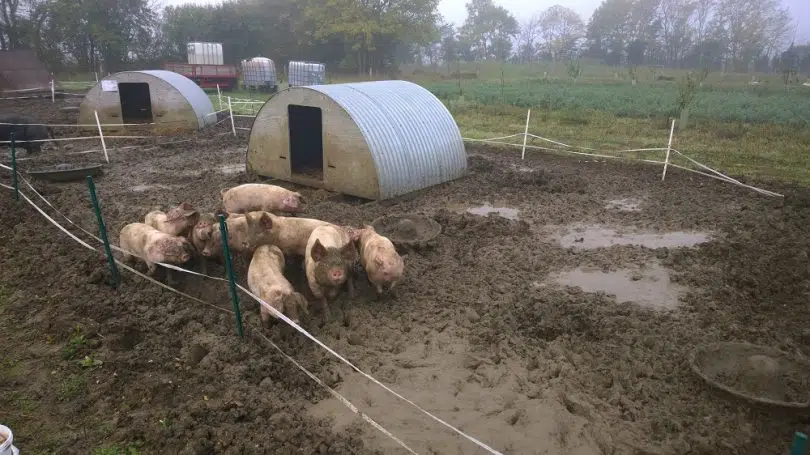
Consider the following as you prepare and ready a shelter for your animals:
- If you already have a barn for the pigs, you are ahead of the game. Bear in mind that allowing pigs access to the barn means you will be hauling the pigs’ manure out of the barn on a regular basis to keep it clean.
- If you have a barn, you can establish a pen around the barn door opening: Doing so will allow you to establish plenty of run space for your pigs.
- An adult pig needs a minimum of 50 square feet of free space to move around in – this helps to avoid overcrowding.
- Draw up a plan for the pen. When doing so, map out a pen that is two times longer than its width. It will give the pigs a good stretch of space to walk.
- When staging the pen for the pigs, position the food source and the pig’s shelter at one end, and the pigs’ supply of water at the other: You must do this because pigs will often urinate and defecate nearby the source of water.
- To keep your pigs both caged and safe from would-be-predators, you need to put up a wired fence around the enclosure. A board has to run along the bottom of the fence work; it makes the area hog tight and stops the pigs or predators from digging underneath the fence. Check out our reviews of the best shotguns for home defense to be able to protect your property.
Secure pig housing
At the bare minimum, you need to put some additional wire around your pig pen enclosure. Proper security for your pigs will ensure their safety, from both escape and attack, and the protection of your investment. If you are building your fence from scratch, you can implement the following measures to ensure the security of the enclosure:
- To prevent the escape of pigs, build a fence out of solid wood and enclose the pig area.
- To stop your pigs from pushing up against the wooden fence you build and forcing their way through it, add a 4×2 welded wire to the fence’s interior.
- If you allow your pigs to roam free in a pasture, a stationary or moveable electric fence might prove ideal.
Do not try to cut corners by not providing your pigs with at least some kind of shelter. Pigs, if exposed to the sun for long periods of time, can get sunburn. If the weather is cold the pigs will desire shelter from the wind and cold air.
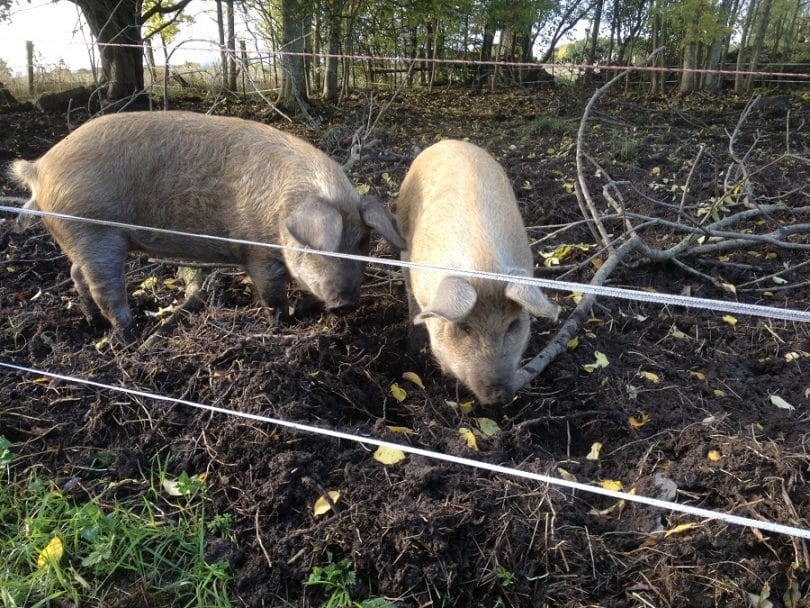
At a minimum, a partial shelter is needed and most farmers recommend a minimum of 15 to 20 square feet of space to provide your pigs with the proper shade and covering. Consider the following features:
- When erecting a partial shelter the covering has three sides and one wide-open entry. You can position the shelter in one of the corners of your pigpen enclosure.
- The roof should be a minimum of four feet high for ample space.
- Under the eaves, you should leave an opening for the escape of excess heat in the late spring and summer months.
- During the warmer months, securing a shade cloth to the enclosure helps cool the area.
- During winter months, a bedding of hay helps to insulate the shelter so your pigs can remain warm.
Pig mud wallow
Your pigs will need to wallow in some mud as it helps them to keep their body temperature regulated. If they get too hot they can roll around and play in the mud in order to cool down quickly. The ability to cool down and to find relief from the stress extremes in heat impose lets your pigs be comfortable, but it helps in preventing heat related or induced heart attacks.
In the event you feel you do not have enough space in the pen for a wallow, you can do one of two things: Extend your enclosure or use a kiddies’ pool as an area where your pigs can cool down.
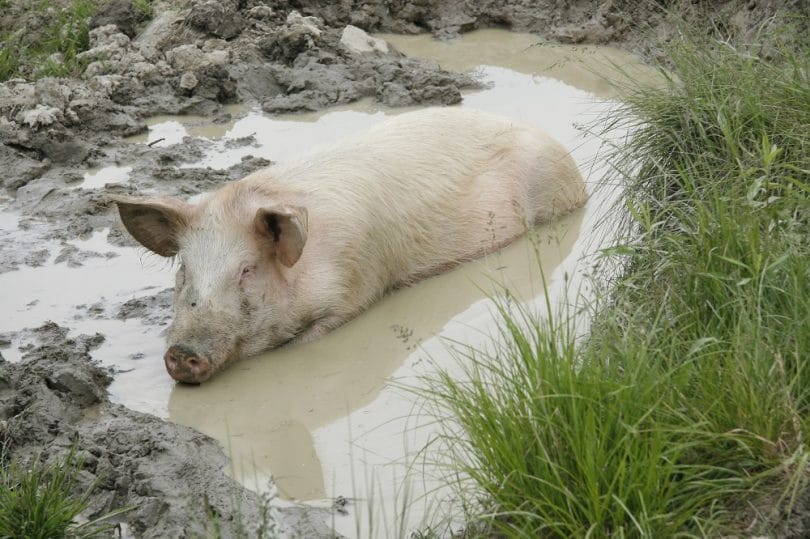
The mud wallow should have plenty of mud, but also a bit of extra water so the pig can lay down and roll around in the muddy water too. You can easily add a mud wallow section to part of the pen you constructed. Here’s how:
- Decide where in the pen you will place the mud wallow. You will have to section the area off from the remainder of the pen.
- Add low-height fencing to section of the area. As an alternative, you can dig a trough around the space you are sectioning off.
- The soil needs to be loose so you will have to till the mud wallow area.
- Once the mud wallow has been tilled, add sufficient water.
- Monitor the water level of the mud wallow. If more water is needed, add some. A daily check on the water levels is recommended.
- To ensure the integrity of the wallow and to limit the accumulation of flies, refrain from getting pig food (scraps or feed) in the wallow. By keeping the food out of the wallow, you are helping to reduce the flies attracted to the area.
Choosing pigs
Once you have established a secure environment for the pigs to live in, you can go and choose the pigs you want to buy. Usually sellers will list piglets for sale in market bulletins local papers. You might be able to find some by word of mouth if you don’t already know of someone who sells live pigs. The piglets you buy will have been recently weaned from the mother and ready to eat regular food on their own.
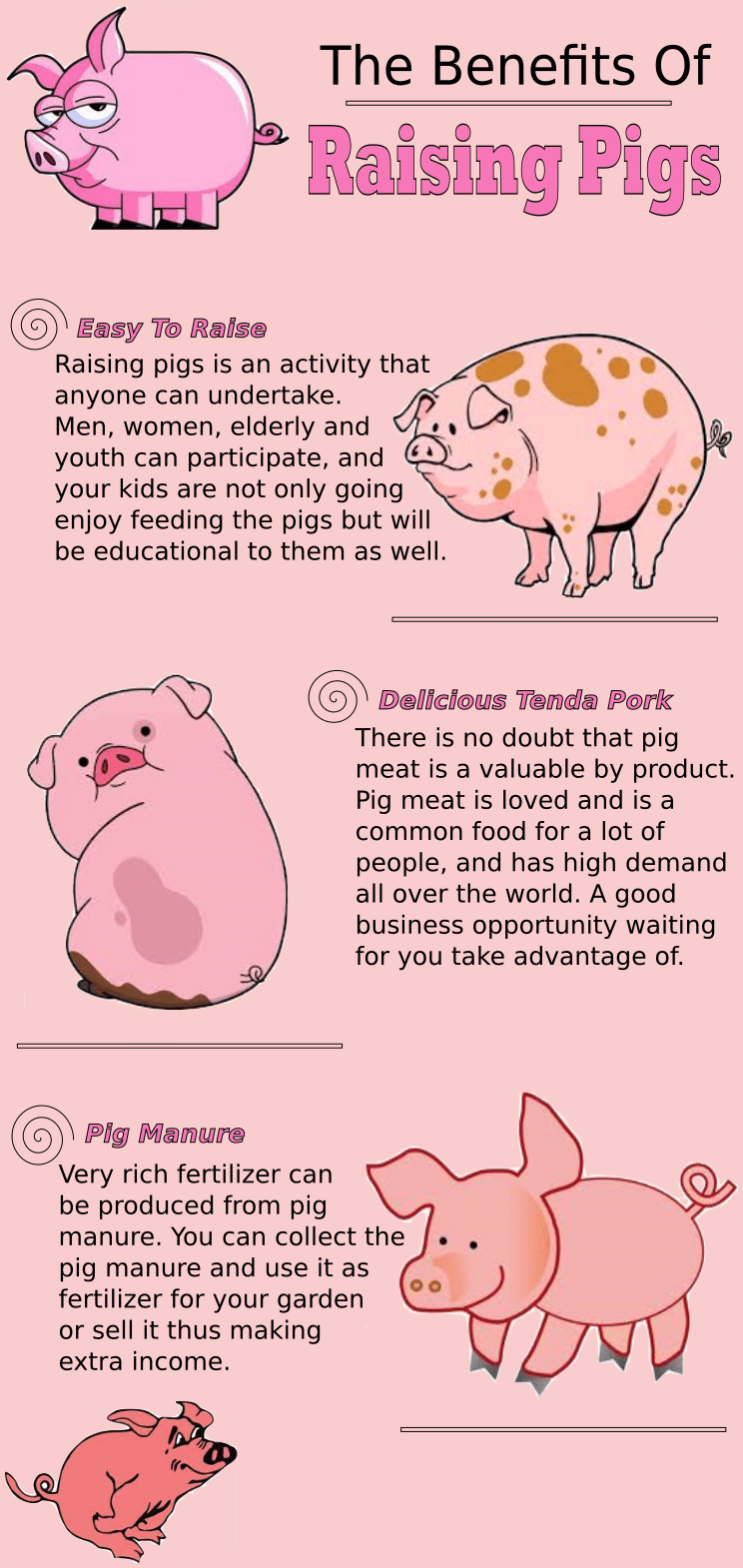
There is no need to go for a specific breed because it is far better to simply choose healthy pigs to buy. Look for the most active and biggest piglets of the entire litter: These will prove the most promising when raising pigs. Do what you can to get your piglets in the earliest part of the season.
Look for a piglet that has big shoulders and hips and a somewhat lean structure: These are the characteristics that will ultimately lead to the piglet growing into a fine meat hog. Avoid any piglet that seems sluggish, sick, listless, or that coughs. Examine the entire pig to make sure there is nothing that would indicate disease. Also avoid pigs with birth defects and malformations.
If you see the pig’s ribs or you can feel the pig’s bones in its back when you touch it, the piglet is too thin and should be avoided. If you notice a bulge in the stomach area of the piglet, again the pig should be avoided as it may be indicative of a hernia. In summary:
| Buying piglets | |
| Characteristics to look for in a piglet | A weaned pig that can eat on its own
Strong Active Big shoulders Big Hips Lean body structure |
| What to avoid | Fatigued Looking
Listless Non-active Excessively thin Malformed Born with a defect |
The most-ideal time to buy pigs is when the weather is warm because pigs thrive best in a warm environment. You will want to buy the feed you need in advance. Over the course of 100 days, a 50 pound piglet can more than quadruple in size and grow into a 250 pound adult pig.
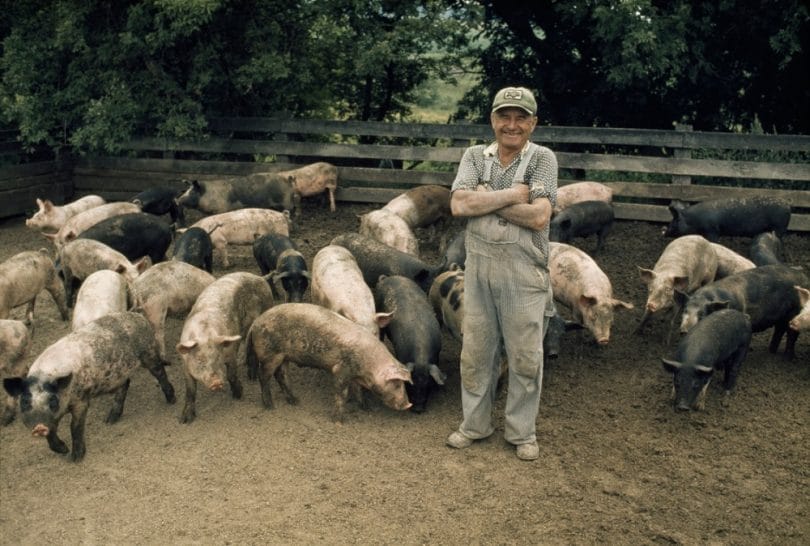
When buying feeder pigs they are often sold when the pigs are right around 40 pounds or so. The pigs you buy will probably cost you in the area of $1 for every pound of pig. A prize winning pig can cost a lot more and price is highly dependent on the farmer you deal with at the time of purchase.
Be careful who you buy your pigs from and where you buy the pigs. Consider that if you are at a location where there are many breeders showing off all of their piglets, the pigs you are viewing are going to be highly stressed: They have been transported to the showing and the foreign environment is likely a little shocking at best. Additionally, once exposed to all the other pigs at the showing, the piglet is more likely to develop any kind of illness other pigs might have at the time.
Feed and water
The feed you choose to offer your pigs is important. You can make your own feed, which can prove expensive, but it is far easier to buy feed from the local feed store. When you invest in a feed that is already pre-mixed you can ensure that the pigs are getting a balanced diet with all the nutrients they need to grow strong and healthy.
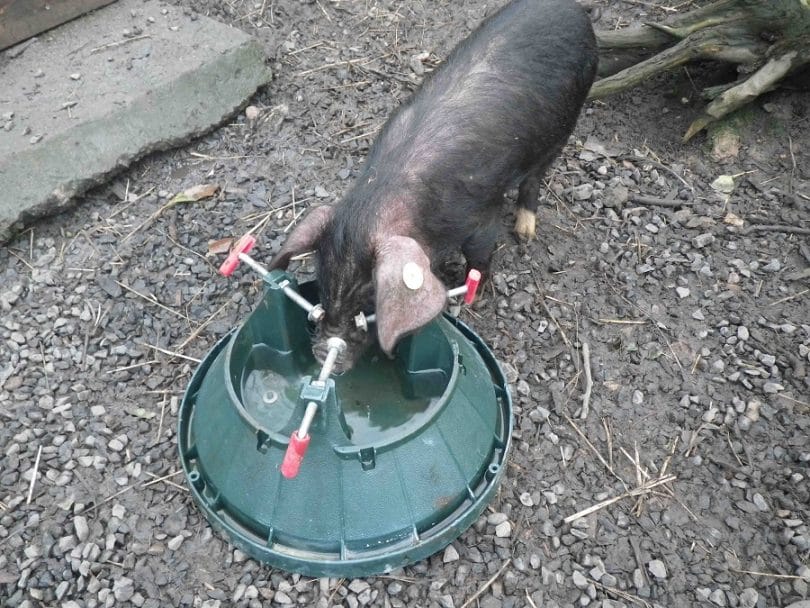
When feeding a 50 pound pig it will need a feed that contains at least 16 percent protein. As the pig ages, its need for protein declines: a 125 pound pig will only require all of 14 percent protein. If feed properly and healthy you can expect your pig to grow at least one pound every single day.
[the_ad_placement id=”in-text-2-type-r”]Feeding pigs leftovers will save you some money, but you must remember to balance this with their regular feed. Leftovers only supplement the pig’s diet, it does not replace it. Also, there are things your pig should never eat as such foods are toxic to the animal including raw meat and raw potatoes. Other things that a pig should not be exposed to include:
| Things that are toxic for pigs | |
| Toxic plants | All toxic plants should be kept away from pigs. If in doubt, do not feed your pig a plant of questionable toxicity. |
| Salt | If the pig is not getting enough water, salt can prove quite dangerous. |
| Rat poison and warfarin | No further explanation required |
| Gasses | Hydrogen sulfide, carbon monoxide, and ammonia. |
| Minerals | Zinc, selenium, manganese, iron, iodine, and copper |
| Trace elements | Coal tars, fluorine, lead, mercury, arsenic, selenium, iodine, zinc, copper, and iron. |
| Anti-bacterial | Sulphadimidine, monensin, furazolidone, and cabadox |
Each pig you have will also need adequate amounts of water. A pig can consume two to four gallons of fresh water daily. Invest in a tub and fill it, but also check it with some frequency to ensure the water is fresh, clean, un-evaporated and not spilled.
Keeping a clean sty
Once you move your pigs in, you have to maintain the pen. The pig pen enclosure is the main living environment for your animals and to ensure humane treatment means to ensure a relatively clean place to live for your animals.
A single pig weighing about 100 pounds can provide you with more than a pound and a half of manure. If you are raising four pigs, you end up getting more than three pounds of pig manure daily, and over the course of the week you end up with 21 pounds of manure. It is easy to see how quickly manure accumulates. To keep the barn and enclosure clean, you will need to remove the manure and put it somewhere until you are ready to use it or sell it.
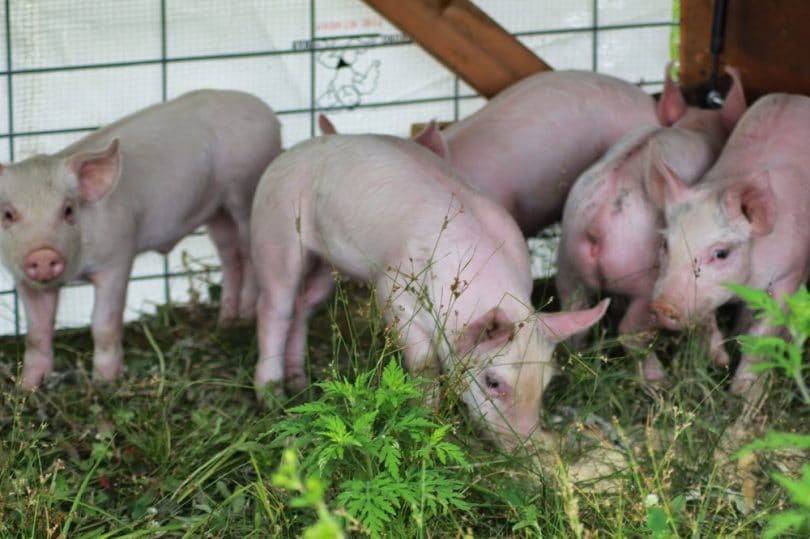
The best use for the manure is for any landscaping you will be doing. Add the manure to shrub bases, tree bases, and flower beds to promote the healthy growth of your plants, flowers, shrubbery, and trees. If you are going to use pig manure there are some things to consider before adding it to any area where you will be growing food. The manure contains bacteria that can transfer to your foods: Keep this in mind when harvesting the foods you grow.
Make sure you clean the foods thoroughly before consumption. Additionally, the manure is also low in nitrogen and other nutrient content most plants thrive on whereas alternative manures, like that derived from beef or poultry has far higher nitrogen contents. You will therefore have to add more to make the most out of the manure you decide to use.
One final note on cleaning the pig pen enclosure: with manure you have flies, and pigs will also leave urine spots nearby their source of water. You will need to cover up the spots with a bit of garden lime to keep flies away. Taking the latter measure kills off fly eggs too.
Hints for pig raising
Besides being an outstanding source of food and a natural source of manure, raising pigs has a number of benefits. Some of the advantages you gain include:
Saving money on feed costs
Any scraps you may have from regular meals can go right to the pigs since pigs will eat just about anything. As long as the food scraps are edible and mold free, you can add it to your pig’s diet. By feeding the pigs scraps you can minimize the expense you have to pay in feeding them. Use a container to add scraps into it after finishing a meal or cleaning the refrigerator, and then serve the scraps with the pigs’ regular feeding.
You benefit from having more than one pig
Some pig sellers will only sell two at a time or more because pigs are social animals. It improves the mental and emotional health of the animals, and they thrive better. They will eat more, grow faster and are happier and healthier because they are competitive. What’s more, because pigs are so social and intelligent, you will find you are entertained by the friendly, easy-going and sweet nature of the animals while you raise them.
Keeping some meat for your family
You don’t have to raise pigs just for the purpose of selling all of them off. For instance, if you have raise two pigs, then sell one. It will nearly cover the price you for the feed and any butcher fees of one you keep. Essentially, you end up feeding your family for free and you can get a lot of meat from one pig: An adult pig weighing 250 to 300 pounds will yield around 120 pounds in prime cuts or 180 pounds in hanging weight: Either way, a pig puts a lot of meat in your freezer.
More raising pig hints
Remember that raising pigs, while lucrative and fun, is still a lot of hard work. In fact, some of the things you have to deal with will not be entirely pleasant.
Consider the following:
- Dealing with manure: as mentioned earlier, it is your responsibility to keep the pig pen clean. Pigs defecate quite a bit and while can serve as manure to give away or sell, the point is you are still going to need to clean out the pen regularly.
- The odorous pig pen and your neighbors – bear in mind that a pig pen will have a naturally bad smell – an odor that is also intensified in the heat of the summer. This odor may not be overtly offensive to you, but your neighbors might not like it. You might want to mention, as a friendly gesture, to the neighbors about your pig raising plans just so they are aware.
- Pigs with attitude – just because pigs are friendly doesn’t mean you won’t encounter a pig or two with an attitude. A pig can ram into with considerable force and, on occasion, they are known to bite. When you are faced with an unfriendly, angry or an escaped and stubborn pig, you can use a sorting board: This is a tool that usually measures around 30 inches by 48 inches and it a rectangular shaped thick piece of plastic featuring top and side positioned cutouts. You can buy them at the local store or you can make your own out of wood. Check out Swine Training Videos – Using Sort Boards above video for more information.
- Maintaining an emotional detachment – bringing up piglets to adulthood and sending them to slaughter is not always as easy as it sounds. You will have to avoid an emotional attachment.
In conclusion
If you one of the many who are considering how to raise pigs, you will find both challenges and rewards lie ahead of you. Raising pigs for meat has so many advantages, especially when it comes to feeding others, feeding your family, and you will find a sense of accomplishment as you become more self sustaining. See also our guide for raising chicken to give you more options for survival.
[the_ad_placement id=”in-text-3-type-r”]Just always bear in mind that, while being quite a lucrative endeavor, you’ve got a lot a work ahead in preparing for the pigs you buy and in caring for them once you get them. Buying pigs is a huge responsibility, and you must be ready for so that the animals get complete and proper care: This includes day-to-day feeding and cleaning as well as any necessary medical treatments. Healthy pigs are not only happier, but they supply you with better meat.


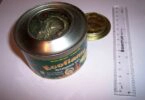


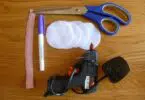
Unfortunate reality is the treatment of the animals we eat is mostly out of sight and out of mind. The business of modern farming has extremely narrow margins that is why producers will push to within an inch of what is legal. It is also misleading to believe that meat with a “humanely raised” label comes from farms that are inspected to verify the claim. “Pasture raised” has also no regulated definition. The USDA doesn’t visit farms to check them.
Aside from selling them for profit or getting good meat products from raising pigs, other advantages to raising them is you get to recycle your vegetable waste as pig’s food. You can also use pigs’ excrement as natural fertilizer for your garden, and even convert pig waste to biogas or biodiesel.
Regardless, the secret to productive pig breeding is to have all the necessary tips at your fingertips. This article offers you exactly that.
Raising pigs can be very substantial and homegrown pork taste great. However, you need to know the basics before you fully engage all your efforts.